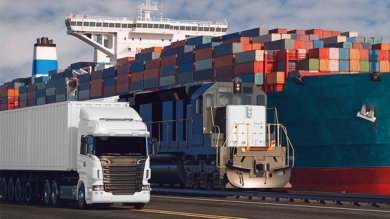Extending Our Reach - MOLOGIZ now available across Kalimantan
Extending Our Reach - MOLOGIZ now available across...

Understanding Multimodal Transportation
Multimodal transportation is a strategic logistics approach that combines various modes of transport—such as trucks, trains, ships, and airplanes—to move goods from one location to another. Unlike traditional single-mode shipping, multimodal transportation streamlines the process by using a single contract or bill of lading, regardless of the number of modes involved. This unified approach simplifies the shipping process and reduces the risk of errors.
Key Benefits of Multimodal Transportation
Types of Multimodal Transportation
Delivery Types and Modes of Transport
Multimodal transportation offers a flexible, efficient, and cost-effective solution for businesses seeking to optimize their supply chains. By leveraging the strengths of various modes of transport, companies can improve their service levels, reduce costs, and enhance their sustainability. As global trade continues to grow, multimodal transportation is poised to play an increasingly important role in the logistics industry.